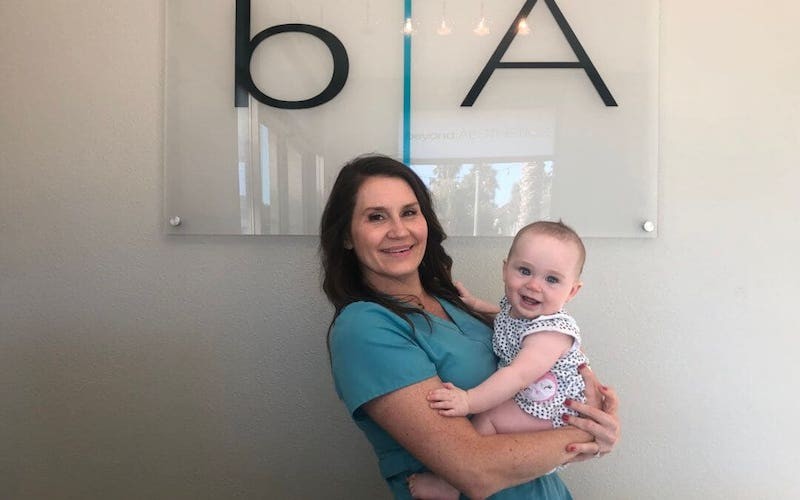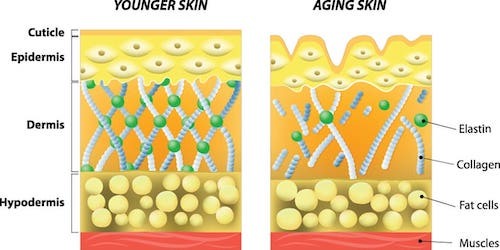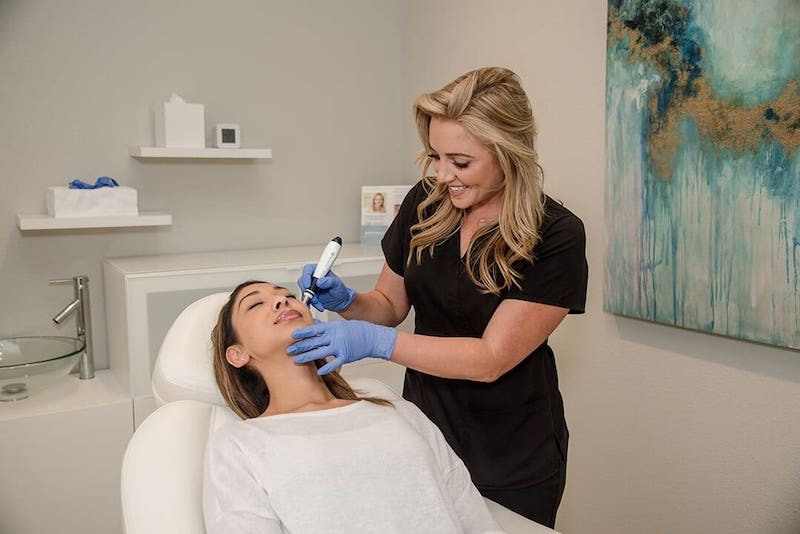
Many patients ask how they can ensure that their skin stays looking young and healthy. My general answer is that maintaining high levels of collagen and elastin is the key to a youthful appearance. But that is usually followed with more questions like, “why are they so important?” and, “what are they exactly?” Let’s take a deeper look at these important proteins that everyone seems to talk about but not many truly understand.

Tis the Collagen That Binds Us
Collagen is an important protein that gives your skin structure and form. Its high tensile strength and rigidity makes collagen a key component in your body’s connective tissues and accounts for about 80% of the dermis. There are actually 28 different types of collagen, but your skin is comprised mostly of type I and type III.
Your body makes an abundance of collagen in your youth but as you age these fibrous proteins degrade and you generate less. Around the age of 25 is when it starts to taper off, around 1% fewer each year. This lends to the visible signs of aging; wrinkles, sagging, hollows, sallowness and crêpey skin. External damage can also occur from things such as smoking, free radicals, environmental pollution, refined carbohydrates and exposure to ultraviolet rays. This damage breaks down the collagen further by causing small tears in the fibers, which slowly diminishes the integrity of the proteins.
There is no way to completely prevent collagen degradation but there are great ways to stimulate production of healthy new collagen. More on that later.
Flexibility, Like Elastin, Is A Virtue
Appropriately named, elastin is responsible for the elasticity of your skin and is another protein found in the dermis. Working in tandem with collagen, which provides structural support, elastin gives your skin suppleness and the ability to bounce back. About a thousand times more flexible than collagen, elastin gives resilience to a plethora of your body’s tissues.
Our bodies usually stop producing elastin after reaching puberty so it’s easy to imagine how it can wear out as we age. Though elastin actually calcifies or hardens as it ages, lessening your skin’s ability to stretch and return to its original position. Beyond that, there is still a lot to learn about this crucial protein that plays a big role in the way we look and feel.

How You Can Get More Collagen & Elastin
There are a variety of aesthetic treatments that claim to offer significant results in terms of stimulating the generation of new collagen and elastin. Providers of modalities from topical creams to powerful lasers often lump collagen and elastin together in promotion of their treatment. While supporting research for neocollagenesis (production of new collagen) seems to be more readily available, there are very few studies on elastin and skin treatments.
A study published in the National Institutes of Health’s website, PubMed, shows that “skin treated with 4 microneedling sessions 1 month apart shows up to a 400% increase in collagen and elastin deposition at 6 months postoperatively,” and that “Microneedling leads to reorganization of old collagen fibres and laying down of new collagen, elastin, and capillaries leading to the effect of skin tightening.”
Microneedling is one of our favorite treatments here at Beyond Aesthetics. It’s great for all skin types and can help with a myriad of skin problems from acne to anti-aging. Since it’s one of the few treatments that can effectively stimulate production of both collagen and elastin, it’s the perfect procedure to keep your skin in good shape.
